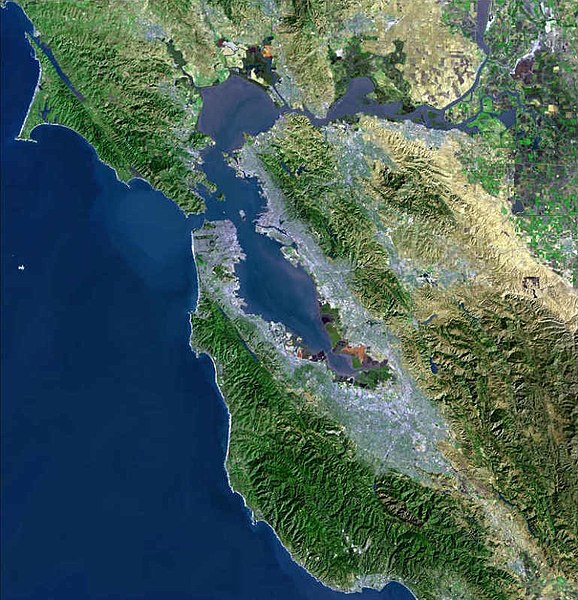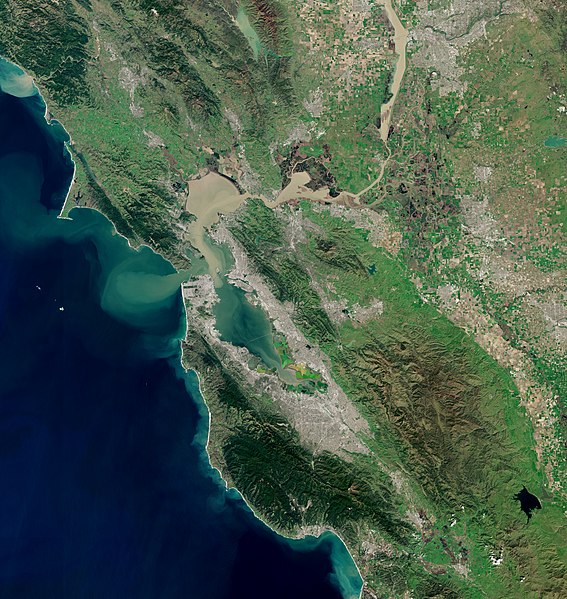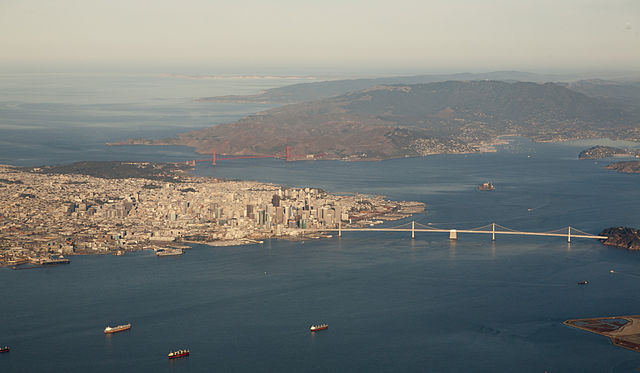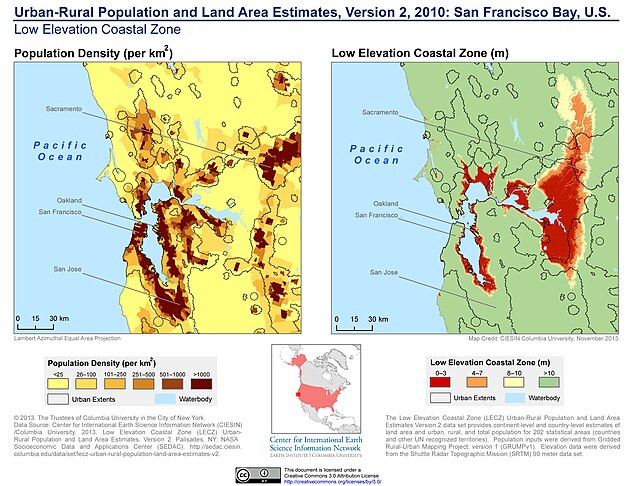The Hayward Fault Zone is a right-lateral strike-slip geologic fault zone capable of generating destructive earthquakes. The fault was first named in the Lawson Report of the 1906 San Francisco Earthquake in recognition of its involvement in the earthquake of 1868. This fault is about 119 km (74 mi) long, situated mainly along the western base of the hills on the east side of San Francisco Bay. It runs through densely populated areas, including Richmond, El Cerrito, Berkeley, Oakland, San Leandro, Castro Valley, Hayward, Union City, Fremont, and San Jose.
Preferential groundwater flow along the fault emerges as a spring supporting the riparian vegetation in the center of this photo of Taylor Mountain Regional Park. The spring is the source of Cooper Creek which flows northward through a deeply incised canyon along the fault on the southern edge of Santa Rosa, California, to a confluence with Matanzas Creek at Doyle Community Park.
San Francisco Bay region earthquake probability
USGS satellite photo of the San Francisco Bay Area. Light gray areas are heavily urbanized regions
The effects of 15 years of fault creep on a curb in Fremont.
San Francisco Bay is a large tidal estuary in the U.S. state of California, and gives its name to the San Francisco Bay Area. It is dominated by the cities of San Francisco, San Jose, and Oakland.
San Francisco Bay
Aerial panorama of the northern Bay, the Bay Bridge, Golden Gate, and Marin Headlands on a clear morning. November 2014 photo by Doc Searls.
Panorama of San Francisco Bay, and the city skyline seen from Marin County in the Golden Gate National Recreation Area
Population density and low elevation coastal zones in San Francisco Bay (2010). The San Francisco Bay is especially vulnerable to sea level rise.








